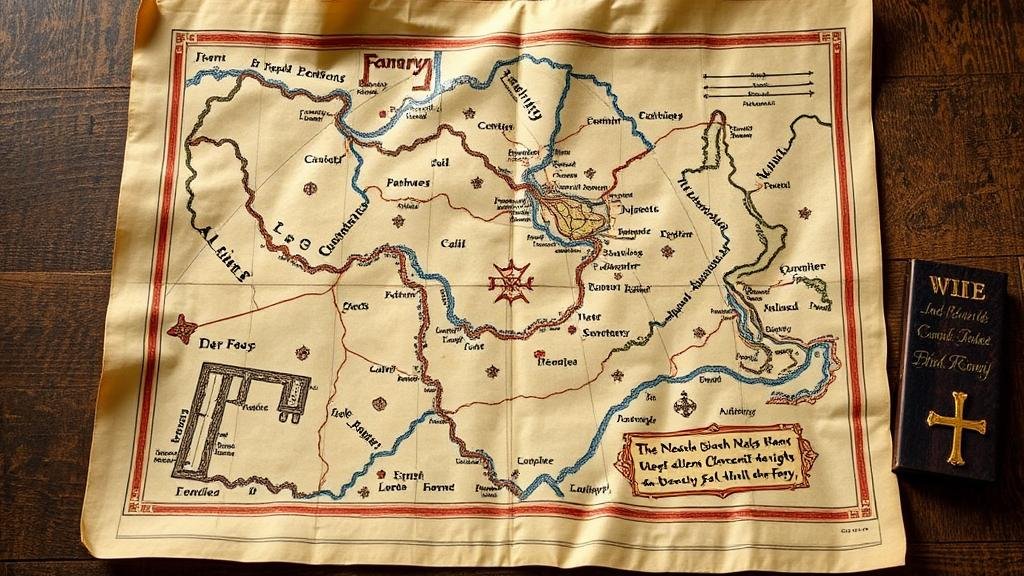Reading Map Clues Hidden in Religious Manuscripts or Codices
Reading Map Clues Hidden in Religious Manuscripts or Codices
The study of religious manuscripts and codices opens a portal to the rich tapestry of human spirituality, history, and culture. Within these ancient texts, scholars have discovered not only theological discourse but also a collection of hidden map clues that can illuminate historical, geographic, and cultural insights. This article delves into the methodologies for identifying and interpreting these map clues, bolstering the understanding of both sacred texts and the societies that produced them.
The Significance of Religious Manuscripts
Religious manuscripts, including codices, are valuable resources for understanding historical contexts. Many civilizations, such as the Maya, Byzantines, and Islamic cultures, preserved their beliefs, laws, and astronomical knowledge within these texts. For example, the Codex Mendoza, created in the early colonial period of Mexico, contains rich illustrations and maps that provide insight into the Aztec Empires social and political structure, as well as its territories.
Types of Hidden Clues in Manuscripts
Hidden clues within religious manuscripts can include:
- Symbolism: Graphic symbols, such as the Tree of Life in the Bible, may represent geographic or cosmological ideas.
- Annotations: Marginal notes can provide context or indicate locations of significance.
- Cartographic Elements: Purely literal map representations showing pilgrimage routes or sacred sites.
Methodologies for Analysis
The analysis of map clues in religious manuscripts involves a combination of philological, historical, and archaeological methods. Key steps include:
- Textual Analysis: Close reading to identify allegories and hidden references tied to locations.
- Iconographic Studies: Exploring symbols and imagery to connect them with geographic or historical significance.
- Geospatial Studies: Using modern tools like GIS (Geographic Information Systems) to overlay ancient maps with current geographical data.
Case Studies of Map Clues
Real-world applications of reading map clues can be observed in numerous historical texts:
The Tabula Rogeriana
Created by the Islamic scholar Muhammad al-Idrisi in 1154, the Tabula Rogeriana is one of the most important medieval world maps. Analyzing its details reveals valuable information about trade routes, cultural exchange, and geographical understanding in the Islamic Golden Age. Al-Idrisis map not only served practical purposes but also illustrated a world that was interconnected through commerce and culture.
The Mappa Mundi
The Hereford Mappa Mundi, a medieval map created around 1300, demonstrates how religious beliefs influenced geographic understanding. The map depicts Jerusalem at the center, reflecting the theological significance of the city to Christianity. Studying this map also uncovers clues about medieval notions of the world, which geographically extended beyond mere physical locations to encompass spiritual dimensions.
Challenges in Interpretation
Interpreting hidden map clues in ancient manuscripts is fraught with challenges. Potential issues include:
- Cultural Context: Understanding the socio-political climate at the time of writing, which may differ vastly from modern perspectives.
- Linguistic Barriers: Variations in ancient languages can lead to misinterpretation or loss of meaning.
- Preservation Issues: Manuscripts may be damaged, affecting the legibility and integrity of crucial map clues.
Conclusion and Actionable Takeaways
Reading map clues hidden in religious manuscripts and codices is an intricate process that combines historical context, textual analysis, and modern cartographic techniques. By carefully examining these ancient documents, scholars can uncover a wealth of knowledge about past civilizations, their geographies, and their spiritual beliefs.
Actionable steps for individuals interested in this field include:
- Engaging with university courses on historical geography and manuscript studies.
- Utilizing digital libraries for access to high-resolution images of manuscripts.
- Participating in interdisciplinary workshops that combine history, religious studies, and cartography.
As modern technology and methodologies continue to develop, the potential for new discoveries in religious manuscripts remains vast, promising richer insights into the human experience.



